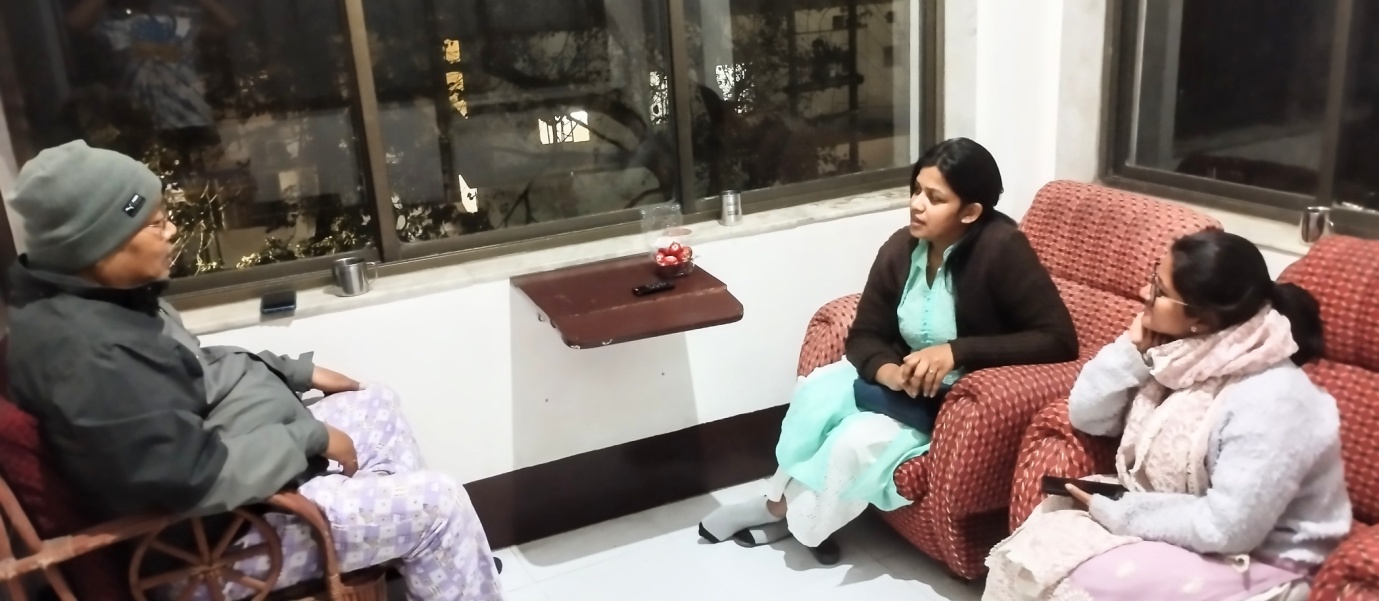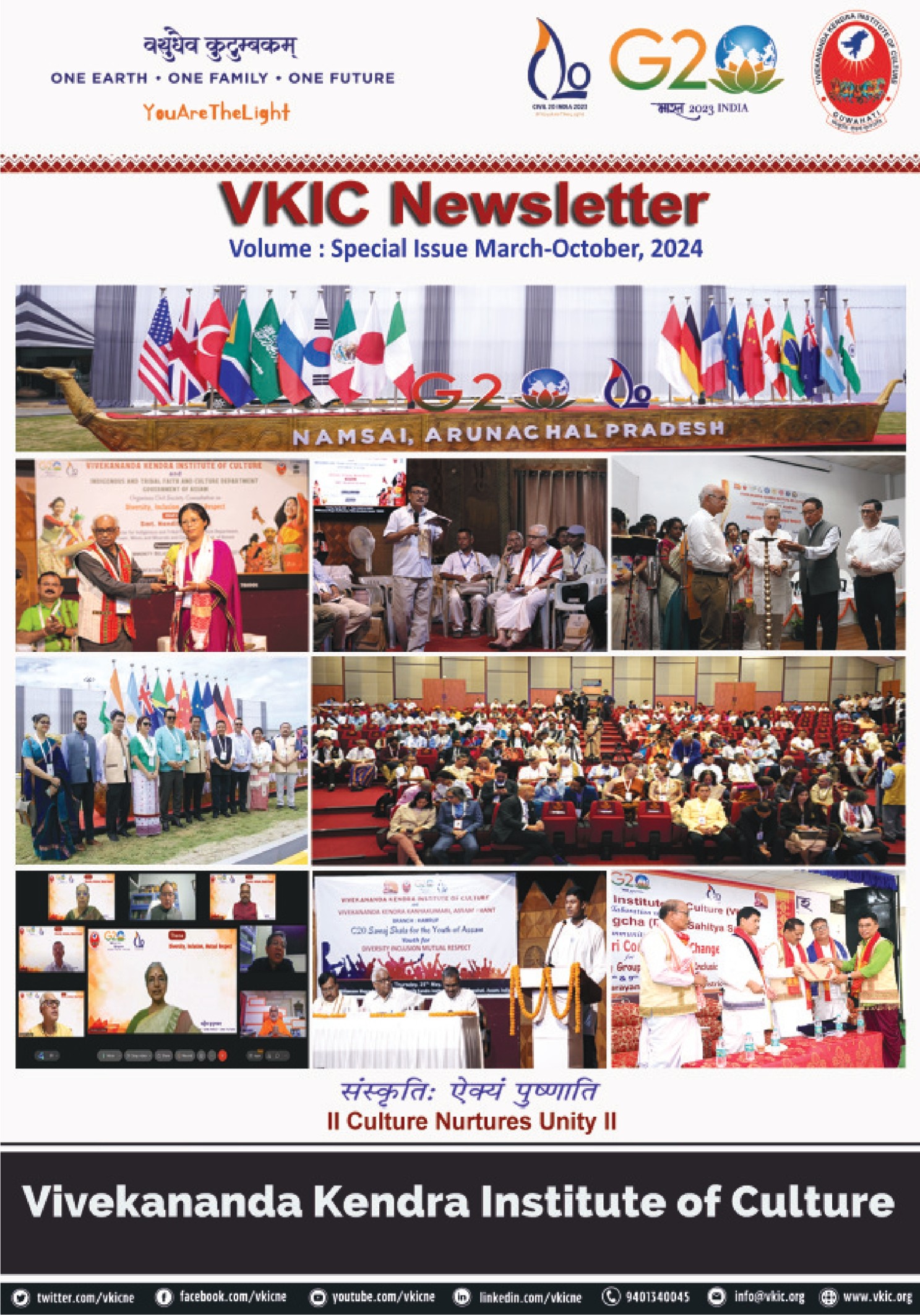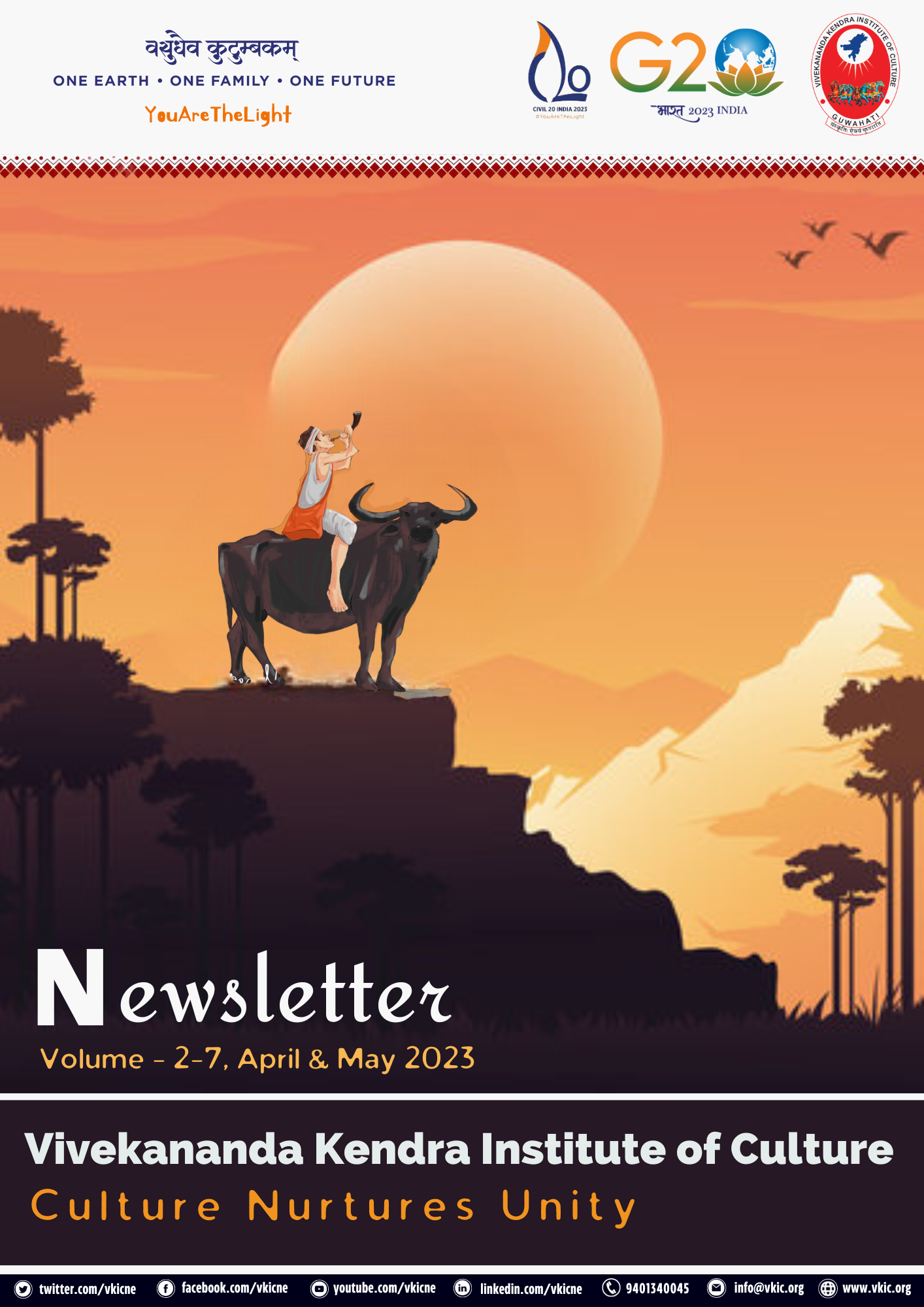Sri Lakshmi Bhusan Chakma is a visionary, researcher and a social practitioner who worked for strengthening the cultural heritage and had outstanding contribution in composing more than 50 songs reflecting the tradition and culture of Mizoram and the Chakma community specifically. He also contributed in developing Chakma script and language by authoring 2 dramas, ‘Duapada Path’ and ‘Ana’ in Chakma language. One of his noted books 'Changmha Pattham Paidhya' was accepted as text book in the Council Schools to introduce Chakma as a subject. He is also drafting a book on indigenous medicines.
In Mizoram, languages which are given importance are Mizo, Hindi and English. Sri Lakshmi Bhusan Chakma is working towards the reviving the Chakma language. He added that Chakma language has various terms for relations like, father, mother, sister, in-laws, cousins, grandparents etc. where except a few, most of them are not used in daily conversation.Like gotra exogamy, the Chakma community has 43 divisions which is called Gojar and the bloodline is called Ginaj which is around 250. He further added about the traditional healing systems where he mentioned about thirty-six number of aqua pressure points which can be treated with medicines and mantras of the priest.

During the interview, Sri Lakshmi Bhusan Chakma discussed about the indigenous faith of Chakma community Gojen, the supreme deity. He added the story of the formation of human being on earth. Gojen being the supreme deity has created Haduka the woman after that formed the Brahma, Vishnu and Shiva (Sip) and later the other deities and nature was created. According to the Chakma community, Gojen is regarded as the Creator and to please the deity various items are offered. He further said that, the community offers different deities’ different items like, wine to Gojen, vegetables, fruits etc to other deities. Though there are restrictions on offering to certain deities, but the offering is based on local commodities available in the village.
The discussion extended to various aspects like, traditional healing medicines, the name of the days and months of a year, the numbering system, like Ek, Dui, Teen, and so on which is similar to Assamese and Bengali language.


